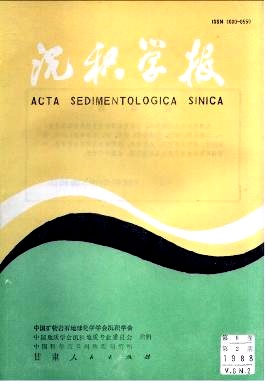THE EVOLUTION OF THE WATER BODY ENVIRONMENT IN QINGHAI LAKE SINCE THE POSTGLACIAL AGE
- Received Date: 1988-01-22
- Publish Date: 1988-06-10
Abstract: Qinghai lake is the largest inlad lake in China. The precursors have researched largely for the lake region. However, so far the study on the stable isotope of the lake has not been reported. According to a lot of the water isotope data and the isotope compositions of the ostracod shells of QH-16A core in Qinghai lake, the paper deals with distributions of δD and δ18O of the water, puts forwards climatic fluctuation model since the postglacial, and expoundes the evolution of the water body environment in Qinghai lake since the postglacial. Sample preparation: δD and δI8O analysis of water was used metal zinc method and CO2-H2O equalibration, respectivtely; δ18O and δ13C analysis of ostracod shells was used phospheric acid decomposition. Under the confidence level of 20, the confidence limit of the former is 0.3‰ and 0.05‰ (V-SMOW), respectively; that of the latter is 0.09‰ and 0.06‰ (PDB), respectively. Qinghai lake water derived from rainwater. According to lots of analytic data, we obtained that the average δD value of the lake water is +10.8‰, the aveage δ18o value is +2.14‰ (v.s. V-SMOW). THe δD and δ18O distributions of various natural water in the lake region exist: precipitationground waterriverlake water. On the basis of the δD and δ180 distribution features of ground water, river and lake water, we evaluatied the inital water isotope compositions of the modern water body of Qinghai lake are -55% (δD) and -10‰, (δ18O), which have the feature of the mixture of remaining water and snow-melt, the δD vertical distribution of the lake water has the characteristic: δD is rich in the top, and poor in the bottom. We evaluated that the inflow of the underground ascending spring is quite enough in Qinghai lake. On the basis of δ18O, δ13C, Mg/Ca and Sr/Ca values of the ostracod shells in the modern lake sediments, Qinghai lake region undergoes five climatic fluctuation periods:cold-warm and dry-cool and wet-mild and dry-cold and dry. Their time span measured by 14C method respectively is:QH-I (10,200-12,300 a, B. P.), QH-Ⅱ (5,400-10,200 a. B. P.), QH-Ⅲ3,600-5,400 a, B. P.), QH-Ⅳ (2,400-3,600 a. B. P.) and QH-Ⅴ (since2,400 a, B. P.). The authors gave a climatic fluctation model since about12,300 a, B. P. and divded it into five climatic fluctuation periods and twenty-two climatic fluctuation stages. Qinghai lake probably underwent a dried-up stage during the summit of the late glacial (Wurm glacial stage). Under the warm climate in the postglacial, the lake started to recovery since the ice and snow on mountains melt and supplied the lake basin. Therefore, the isotopic compositons of the initial water in the recovering lake are much higher than the average isotopic composition of the rainwater in the region. Since about morethan 10000 years, the water body environment of Qinghai lake, controlled by the postglacial climatic fluctuation, was high salinity and shallow lake in the Early Holocene,. The lake water became deep gradually and the salinity also became low from 7,600 to 5,400 a, B. P. (in relation to Atlantic). The formation of the deep lake was in the Middle Holocene (ca. 4,500-2,400 a, B. P,). At about 3,600 a, B. P., the lake water reached the largest depth and the salinity was the lowest too. After this, the lake water got into a positively evolutive stage. In the Late Holocene (since ca. 2,400 a, B. P.), climatic environment was cold and dry. The lake water evoluted positively, the water level slowly falls, so far the water depth is ca. 20.4m. The salinity slowly increases until the present 14.146g/l.
| Citation: | Zhang Pangxi, Zhang Baozhen, Yang Wenbo. THE EVOLUTION OF THE WATER BODY ENVIRONMENT IN QINGHAI LAKE SINCE THE POSTGLACIAL AGE[J]. Acta Sedimentologica Sinica, 1988, 6(2): 1-14. |






 DownLoad:
DownLoad: